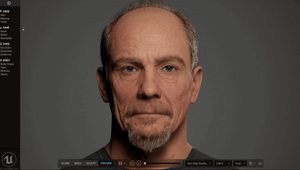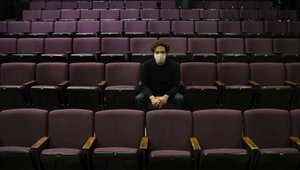
How VR is Changing the World of Sport

Innovative endeavours in immersive reality production are taking enjoyment of sport to the next level by removing the barrier of the flat screen that lives between fans and their favourite game. By allowing a near-real piece of the action when it comes to the stadium, pitch or court-side experience, immersive platforms are making sport an accessible and unique experience for the masses.
Getting closer to the action
The Rio 2016 Olympic Games promised up to 100 hours of VR coverage from broadcasting networks such as NBC and BBC, made viewable with VR headsets. Despite the footage being available after a 24-hour delay, the BBC saw over one million individual users utilising the streaming service.
Now, we’re seeing even more promising developments. Last November it was announced that Intel had acquired VR startup Voke in a significant move into immersive sporting experiences. With a stereoscopic 3D capture system, the VR player will allow viewers to perceive realistic proportions and depth as they move about the sidelines of the field, court or pitch in real time. So no more wondering if a drop goal will go the distance!
360-degree video is a cost-effective and easily accessible way to truly amplify the viewer’s sense of being right in the presence of their favourite team. In our work with Nike, we were asked to create a 360-degree immersive advert inside the locker room of the Turkish national football team. By situating the viewer directly within the scene to navigate about it as they wish, the video makes for a more personalised experience and allows you to feel a part of the action.
For an even closer insight, a Spanish VR production company, FirstV1sion has created a first of its kind smart wearable to offer fans a player-perspective video feed. They manufactured a t-shirt embedded with a microphone and HD camera on the chest, as well as heart rate monitor and accelerometers. Video footage from the player’s point of view allowed the audience to experience the same sense of movement and speed the player does. Accentuated with data on their physical exertion, it enables the viewer to feel as though they are in the player’s own skin. It was first piloted in Euroleague basketball in 2015 and makes for an incredibly emotional experience of the sport.
Dialling up interactivity
Beyond simply placing the viewer anywhere within a stadium, VR apps can be integrated with supplementary media, like sports commentary, press broadcasts, and player profiles we’ve come to rely on to create a fully immersive VR experience.
In a world first, Fox Sports broadcast highlights from Super Bowl LI in virtual reality through the Fox Sports VR app - in near real time. Once inside the app, viewers had access to virtual reality replays from a choice of angles, instant stats, player line-ups and information, and even a store for game-related merchandise.
One of the strongest arguments against the use of VR in consuming sports content is the fact that it takes away one of the real joys of watching a favourite game - the social aspect. This is indeed the future. You will be able to connect with friends anywhere in the world and watch and chat about a game together, in real time. In fact, Virtually Live is already tackling the social element with its VR offering. The company’s technology is similar to that of Beyond Sports. It displays a virtual reconstruction of the stadium and players in near-real time. Fans are invited to step in and view the environment from their chosen viewpoint.
As partnerships between virtual reality production companies and other platforms develop, it’s possible that social media feeds, messenger apps and other digital entertainment could all be pulled into the VR broadcast, creating a fully immersive social experience.
Mixed Reality - the future of live sport
Mixed Reality is a significant advancement of Augmented Reality (AR) and offers a genuinely transformational experience. Microsoft’s HoloLens is the best example of MR to date, and Magic Leap’s to-be-determined offering will help further define the category.
In a 'hybrid' environment, interactive virtual objects can be mapped to the physical environment, seamlessly blending the real and the virtual. While the core premise of both AR and MR is similar, the crucial difference is the underlying technology. Mixed Reality is (for the moment, at least) headset-based, whereas AR is viewed through a flat-screen such as a smartphone or tablet. Mixed Reality is also aware of the geometry of the environment around the user – using it as a canvas to create immersive content that is defined by the space the user inhibits.
REWIND has started to utilise MR to enhance the viewing experience of live sport. ‘Flight Deck’ is a Microsoft HoloLens companion for the Red Bull Air Race. The experience takes the excitement of the Red Bull Air Race to a whole new level. The user learns the rules of one of the fastest sports in the world, from the Start Gates to how to take a Chicane; watches a live race with TV feeds; witnesses for the first time more than one plane fly head-to-head; plus stands next to a 1:1 scale Edge 540 plane.
We’re already experiencing the future of live sport, but the full extent of where we can go with the tech is yet to be discovered. Just as E-sports have emerged, we may see new sports based on VR, AR and MR launch; a virtual reality season ticket will become a thing, and VR training will be the norm. It would be premature to state that VR will take over from real-life experience but there is no doubt it has and will continue to, transform the sports industry.










